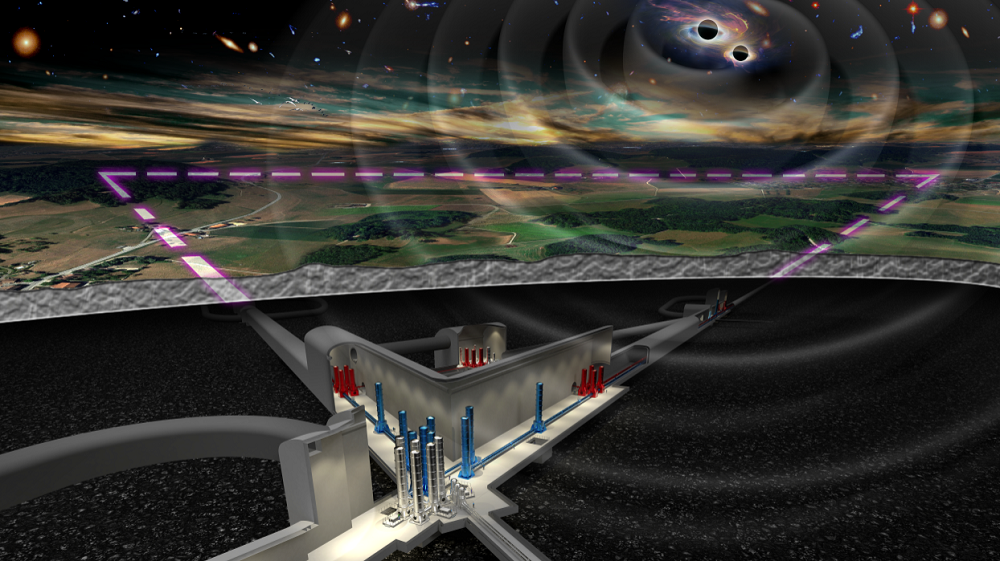
The Einstein Telescope (ET) scientific collaboration was formally established during the XII ET Symposium which took place at the Hungarian Academy of Sciences, Budapest, in June. The Symposium brought together the scientific community working on the ET Einstein Telescope project to build Europe’s future pioneering gravitational wave observatory.
Named after the great German theoretical physicist who was the first to predict the existence of gravitational waves, ET will be the most sensitive gravitational wave observatory ever built. The large research infrastructure will be used by scientists to “pick up” signals emitted just after the Big Bang and to study the nature of black holes. This makes Einstein Telescope a hugely important instrument for international physics and astronomy.
The Einstein Telescope Project is led by Jo van den Brand of Nikhef, the Dutch National Institute for Subatomic Physics, and by Fernando Ferroni, Gran Sasso Science Institute (GSSI) and Italian National Institute for Nuclear Physics (INFN).
“We were a scientific community, today we are a scientific collaboration, that is, a structured and organized system that works following shared rules to achieve a common goal: the construction of Einstein Telescope, a large European research infrastructure that will bring us to the centre of world science, allowing us to maintain scientific and technological leadership in this promising field of fundamental physics research. This is therefore a moment of great satisfaction and motivation for all of us,” commented Michele Punturo, an INFN researcher who has been leading the ET community until now and will now serve as the collaboration’s spokesperson.
“In the Collaboration we already have an Observational Science Board with more than four hundred people who are working on different scientific topics, from fundamental physics to nuclear physics, from astrophysics to astroparticle physics, to cosmology. ET will be truly revolutionary for our understanding of the universe throughout its cosmic history,” explained Marica Branchesi, professor at the Gran Sasso Science Institute (GSSI) and researcher at INFN, coordinator of the Einstein Telescope Observational Science Board (OSB).
The sophisticated research infrastructure will operate in the field of gravitational and “multi-messenger” astronomy: a branch of astrophysical research established after the first gravitational wave observation in 2015 announced by the LIGO (Laser Interferometer Gravitational-Wave Observatory) and Virgo collaborations. “These are exiting times: the detections of gravitational waves by LIGO and Virgo started a scientific revolution, ushering in the era of gravitational and multi-messenger astronomy, which has a bright future,” commented the director of the European Gravitational Observatory (EGO), Stavros Katsanevas.
“The LIGO-Virgo-KAGRA network is currently improving its sensitivity towards a multiplication of detected gravitational wave events by an order of magnitude and more, and it is encouraging that this effort can continue with the third-generation Einstein Telescope detector. ET will probe the universe of gravitational waves to the dawn of star and galaxy formation and beyond,” concluded the EGO Director.
The Symposium brought together 438 scientists from 13 countries, both in person and remotely, who discussed the upcoming challenges and the scientific progress made in recent months by each ET working group. During the event, Jo van den Brand and Fernando Ferroni presented the perspective of the scientific institutions that are supporting ET. Finally, the ET Collaboration Council was established, chaired by Harald Lueck of Max Planck Institute, Germany, and composed of representatives from each of the 79 research groups participating in the collaboration.

